By now, Xiaomi is widely regarded in the Philippines as a go-to brand for affordable yet powerful devices. The brand has been steadily increasing their presence locally, even setting up various Mi Stores at major locations. Last month though, they introduced to the local market their flagship for 2018, the Mi 8. Is it worthy of being called a flagship by 2018 standards? Let’s find out in our full review!

Table of Contents
Design and Construction
At first glance, the Mi 8 may look like your average 2018 smartphone — tall aspect ratio display with a notch on top. It even closely resembles a particularly well-known Apple device. Although, once you lift and feel the device it becomes an entirely different story. Xiaomi gave the Mi 8 a very shiny and smooth glass back panel that’s nice to the touch and reflects light at certain angles for added flair. That same back panel plus the rounded edges make it feel like an elegant and premium device. Although sadly, it also makes it slippery and prone to smudges.

We have the standard button layout here with the power/lock button located on the right and the dual-SIM card slot on the left. The buttons are clicky and silent but are a little hard to reach during one hand operations. If there is one thing that’s missing here, it’s the option for expandable storage as the Mi 8 has none, not even a hybrid setup.

A 2018 flagship won’t be a flagship if it’s not equipped with a USB Type-C port. Thankfully, down at the bottom of the device is the said port sandwiched by two speaker grilles (main mic on the left and loudspeaker on the right). If you noticed there is no 3.5mm audio port but Xiaomi didn’t leave us hanging as there is a USB Type-C to 3.5mm adapter in the package.

Then at the back is the dual 12MP AI cameras accompanied by an LED flash and a fingerprint scanner.

The device is relatively thin and light but still feels sturdy in the hands. It’s easy to grip but again slippery, especially when placed on a flat surface without any protection. It fit the pockets of our pants and shorts just fine, so lugging it around won’t be a problem. Xiaomi did include a transparent silicone case in the package so we could still appreciate that elegant glass back without the stress of continuous wiping. It also removes that slippery nature of the device.
Display and Multimedia

The Mi 8 comes with a 6.21-inch FHD+ (2248 x 1080) AMOLED display designed by Samsung. Being an AMOLED display, colors are well-saturated, blacks are more visible and viewing angles are great. It may not have a QHD or 4K display, but the quality of its screen is more than enough to provide an enjoyable viewing experience.
It also has a generous 88.5% screen-to-body ratio, making it great for video and movie consumption. Xiaomi also removed the hassle of manually hiding the notch when watching videos as the phone does it automatically. The option is still there under the settings menu though if you wish to hide the notch even during normal operations.
Despite having only a single loudspeaker at the bottom, the device still pumps out good audio. The mids and highs are spot-on and sounds are crisp and clear even at max volumes. Once again, lows are almost non-existent but the overall audio quality is not too shabby.
Cameras

The Mi 8 comes with dual 12MP AI rear cameras and a 20MP front, with AI as well. The rear has 4-axis Optical Image Stabilization and dual-pixel AF. For modes, we have Short Video, Video, Photo, Portrait, Square, Panorama, Manual, a set of filters and Beauty Pro for the rear. The front, on the other hand, has all of the rear’s features except for Panorama and Manual. The AI functions of the shooters can be toggled on or off if ever you want an unedited version of your shots.

The image quality of the dual rear AI cameras is pretty impressive. Shots have amazing quality, sharpness, dynamic range and spot-on color reproduction and accuracy. The AI helps a lot in post processing images to the intended scenery, like food or nature. Low-light shots are also impressive despite noise being visibly noticeable. At first, we were even disappointed as noise was really evident on the camera UI but once the AI does its magic it became minimal. Auto-focus was also fast, snappy, and on-point. Check out some of our sample shots below.
That amazing image quality translates to the front camera as well. Selfies are crisp and clear, have good color reproduction, sharpness, and accuracy. The AI also works flawlessly in smoothing out your skin without making it look too artificial. Beauty options are still there but we think the AI is more than enough for your selfie needs. Check out our samples below.
Video maxes out at 4k/30fps. Auto-focus is quick and footages are crisp and clear with good dynamic range, sharpness, and color. The mic even picks up audio quite well. Check out our sample video below.
OS, UI, and Apps
Our unit runs on the global version of MIUI 9.5 on top of Android 8.1 Oreo. The UI is pretty straightforward — no app drawer as all the apps are managed by home screens. It’s still a simple and clean UI to use, especially if you’re already familiar with MIUI.

We do, however, have the pleasure of enjoying some nifty features such as Second Space (Splits the phone’s storage and operation into two), Full-Screen Gestures (replaces on-screen navigation for gestures), and dual apps. This is of course, on top of what Android Oreo has to offer. It’s almost close to a stock Android experience though with how minimal Xiaomi has enforced their own gimmicks.

We have the 64GB version on hand but there is a larger 128GB variant available in the market. There are a few pre-installed apps like booking.com and iReader as well as some Mi homebrew. This paired with the standard Google Apps and Microsoft apps leave us with about 52.6GB of usable space from the initial 64GB.
Performance and Benchmarks
Powering the Mi 8 is the powerhouse Qualcomm Snapdragon 845 paired with 6GB of RAM. The phone managed to handle everything we threw at no matter how graphics-heavy or intensive it was. Multitasking wasn’t a problem either thanks to the hefty 6GB of RAM.
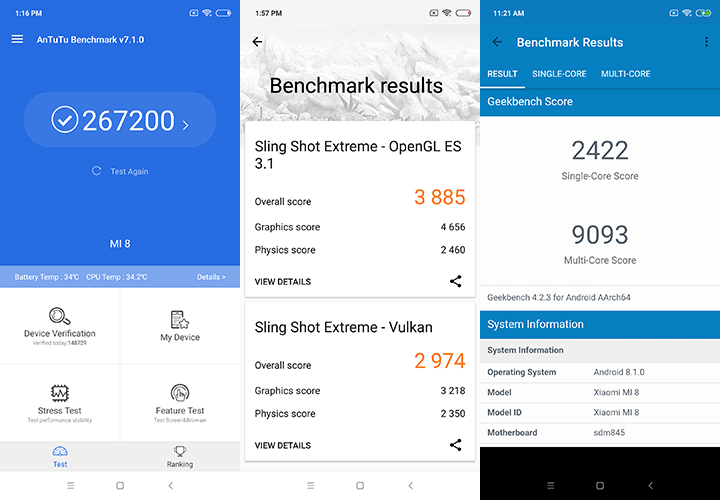
Games are also a treat to play as even the heaviest of titles run buttery smooth on the device. We encountered almost no jitters, frame drops or lags with games like PUBG Mobile, Tekken 7, and Asphalt 9. Facial recognition was fast and very responsive, especially in bright areas as it instantaneously unlocks the device. Low-light performance is also impressive with only about a second of delay.
- AnTuTu (v7) — 267,200
- Geekbench — 2,422 (Single Core), 9,093(Multi-Core)
- 3DMark — 3,885 (SSE – OpenGL ES 3.1), 2,974 (SSE – Vulkan)
- PCMark — 4,676 (Work 2.0), 5,315 (Work 1.0)
Connectivity and Battery Life

The Mi 8 packs a good set of connectivity features which includes 4G LTE, WiFi, Bluetooth 5.0, NFC, GPS, and OTG. Call quality is clear and good and GPS works perfectly for apps like Waze, Maps, and Grab. Signal reception was also good when we were in serviceable areas, we even used it as a mobile hotspot during our trip to Taiwan.

The device comes with a 3,400mAh battery with Quick Charge 4+. Battery life is actually superb, we were getting about a day or two on minimal usage without WiFi and about a day with heavy usage on WiFi. During our standard video loop test, the phone lasted for a good 20 Hours and 35 Minutes, which is impressive. Charging from 0-100% takes about an hour to an hour and a half, thanks to QC4+.
Author’s Note: PC Mark Battery Test 1.0 and 2.0 both crash before completion.
Conclusion

Xiaomi once again proves that flagship specs and performance doesn’t have to come at a steep price. The Mi 8 is very much a flagship device by 2018 standards. It has impressive cameras, display, performance, facial recognition, and capable speakers. It is a complete package that offers the best the market has to offer at an understandably affordable price tag to boot — Php 25,990 (6/64GB) and Php 27,990 (6/128GB).
Xiaomi Mi 8 specifications:
| Xiaomi Mi 8 | |
|---|---|
| Display | 6.21-inch FHD+ (1080 x 2248) 18.7:9 Samsung AMOLED display, 402ppi |
| Glass Protection | Corning Gorilla Glass 5 |
| CPU | Qualcomm Snapdragon 845 2.8GHz octa-core CPU |
| GPU | Adreno 630 |
| RAM | 6GB RAM |
| Storage | 64GB / 128GB / 256GB storage |
| MicroSD card support | - |
| Rear camera | 12MP + 12MP AI dual rear camera, dual-pixel AF, 4-axis OIS, LED flash |
| Front camera | 20MP AI front camera |
| Connectivity | Dual-SIM (nano) |
| 4G LTE | |
| WiFi 802.11 a/b/g/n/ac | |
| Bluetooth 5.0 | |
| NFC | |
| Dual-Band GPS | |
| USB Type C | |
| Biometrics | Fingerprint scanner |
| Infrared face recognition | |
| OS | MIUI 10 (Android 8.1 Oreo) |
| Battery | 3,400mAh battery w/ QC4+ |
| 154.9 x 74.8 x 7.6 mm | |
| 175 g | |
| Color | Black, Blue, White, Gold |
What we liked about it:
- Amazing display
- Top-notch performance
- Impressive cameras
- Capable speakers
- Long Battery Life
- Affordable Price tag for its class
What we didn’t like about it:
- Slippery and smudge-magnet back glass panel
- No 3.5mm audio port
Related Articles:
- Xiaomi Mi Mix 2s vs Mi 8 specs comparison
- Xiaomi Mi 8 Review
- Watch: Xiaomi Mi 8 Unboxing, Hands-on
- Huawei Nova 3 vs Xiaomi Mi 8 specs comparison
- Xiaomi Mi 8 to be available in the Philippines in July
- Specs Comparison: Xiaomi Mi 8 vs OnePlus 6
- Xiaomi Mi 8 scores 99 points on DxOMark
- Xiaomi Mi 8 SE with Snapdragon 710 now official
- Xiaomi Mi 8 now official
- Xiaomi Mi 8 specs, retail box leak ahead of launch






























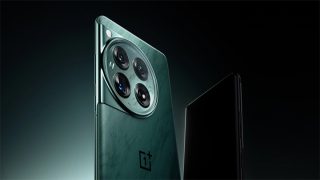
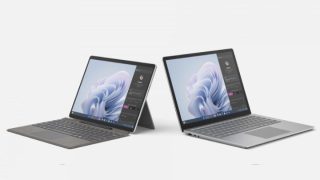
















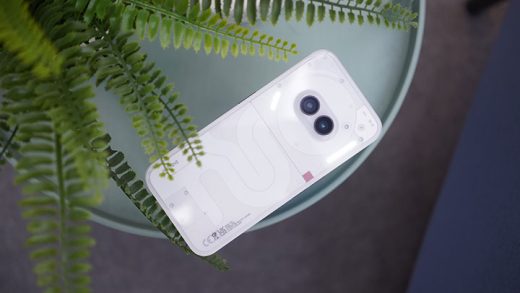
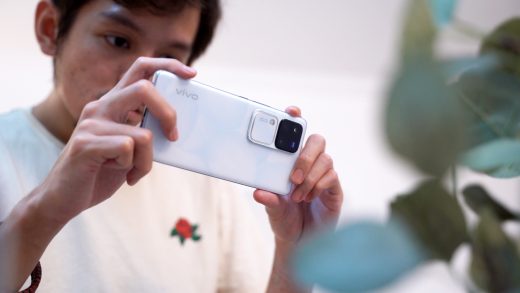
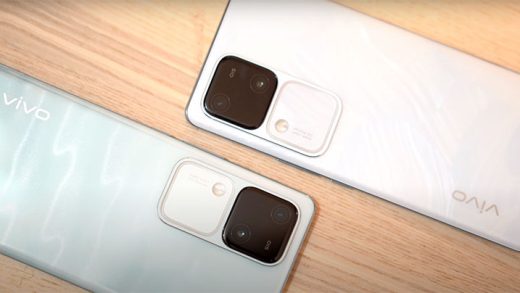





how did you make the facial recognition work?
How about the GPS problem of the Mi 8? How can we fix it especially now that Waze is so important to drivers nowadays.